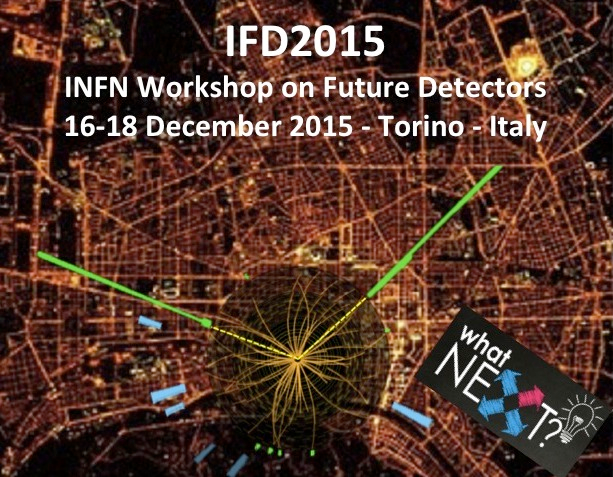
Aula Magna della Cavallerizza Reale, Torino, Italy
published July 31, 2017
Italy has been one of the key players in the effort that led to the discovery awarded the 2013 Nobel Prize for Physics, having provided a highly recognized technological contribution both to the LHC and to the experiments. The top priority of the European Strategy for Particle Physics is the exploitation of the full potential of the LHC including the high-luminosity upgrade of the machine and detectors. To be able to contribute at the international level and to foster common R&D projects the INFN Workshop on Future Detectors for HL-LHC (IFD2014) was held in Trento (March 11-13, 2014) to focus on the upgrades of the experiments for the High Luminosity LHC. The goal was to establish an open framework to discuss and work on new ideas for research and development where expertise can be shared and expanded across the different INFN experimental groups. This effort aimed to explore and consolidate a constructive interaction within different national research centers, facilities and industry also to better prepare for Horizon2020 applications.
At the same time INFN started the What Next (WN) program, a process based on open and wide discussions to investigate possible new research ideas and to promote new science-driven experiments. It is clear that new or improved technologies play a crucial role to pave the road towards the necessary breakthrough for possible discoveries.
With this aim IFD2015 in Torino, became the INFN Workshop on Future Detectors (December 16-18, 2015), where the What Next challenge to identify new ideas to be explored was technology-driven exploiting cross synergies coming out from different research groups, research facilities and industry.
Chairmen: Nadia Pastrone, Valter Bonvicini

| PHYSICS-DRIVEN DETECTOR CHALLENGES |
|---|
|
Future accelerator challenges
|
|
Future rare event challenges
|
|
Future neutrino + Extensive Air Shower challenges
|
|
Future space challenges
|
| ENABLING TECHNOLOGIES IN DETECTOR CHALLENGES |
|
Nanostructured materials for particle detector
|
|
New sensors
|
|
How can we use SiC?
|
|
New low radiation background material technology
|
|
New low temperature and superconductivities challenges technology
|
| LARGE DETECTORS |
|
MPGD: new developments and applications
|
|
Large area detectors
|
|
Future large volume neutrino detectors
|
| NEUTRAL PARTICLES |
|
New generation of photodetectors
|
|
New trends in calorimetry
|
|
New detectors for light sources
|
|
New neutron detections
|
| CHARGED PARTICLES |
|
Ricordo Prof.Pier Francesco Manfredi
|
|
Vertexing and tracking with high radiation environment and high pile-up
|
|
Tracking in 4 dimensions
|
|
L1 trigger track and pattern recognition applications
|
|
Hybridization, interconnection advances
|
| AXIONS AND GRAVITATIONAL WAVES DETECTORS |
|
Technologies for future gravitational waves detectors
|
|
New detectors for axions
|
| NOVEL IDEAS AND APPLICATIONS |
|
What are the new challenges in hadroteraphy?
|
|
New needs and directions in microelectronics and ultrafast electronics
|
|
What's new for Dark Matter (WIMP) detection?
|
| WRAP-UP |
|
IFD2015: conclusive remarks and perspectives
|
